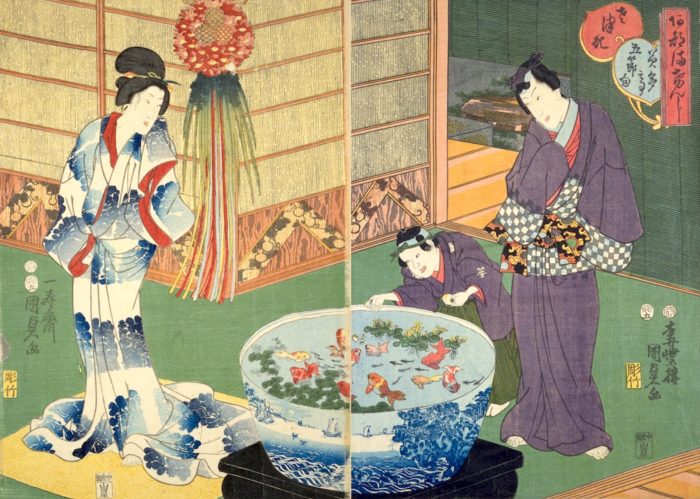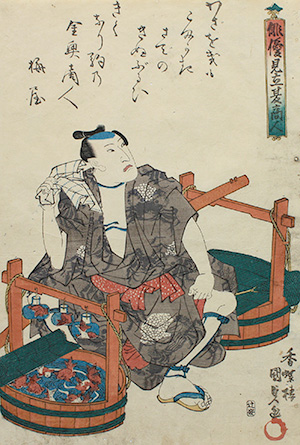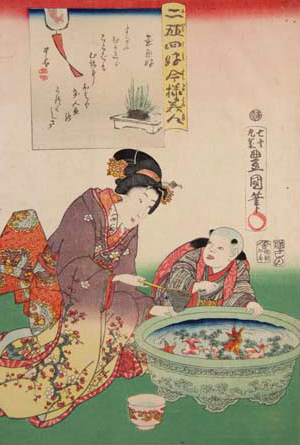Before the 1960s, Japanese streets had various vendors. After that, the only things left were fish vendors, baked potatoes vendors, etc.
The street vendors who made me feel early summer was the goldfish vendors.
The goldfish is thought to have been artificially bred from the crucian carp in China. They are thought to have been imported to Japan during the 16th and 17th centuries. They became widely popular in early 1800s, when they were frequently kept in garden ponds. Street vendors carrying goldfish in an oval tub first appeared during these years.By the time of early 1700s, it became widespread and stalls were opened. Furthermore, many goldfish specialty stores were opened in Asakusa. It also adds color to the fairs and night stalls.

The ukiyoe as above is “Atsumakenshimitate Gosekku” by Toyokuni Utagaw 1855.
This is an ukiyoe print showing the financial power of a wealthy merchant. It is a fishbowl of amazing size.At that time, there were only pottery fish bowls, so they saw it from above. This “goldfish glimpse” is beautifully drawn. Goldfish are also expensive. Is the mother just after bathing? She is relaxing in her yukata.
Japanese painter Kiyokata Kaburaki(1878-1972) drew a goldfish store as a subject for June. An older sister in hakama style and a boy in sailor clothes asked a saleswoman in yukata to choose goldfish . I guess it is a picture of the early 1900’s from their fashion. Fuyo flowers are blooming and a swallow is flying.



